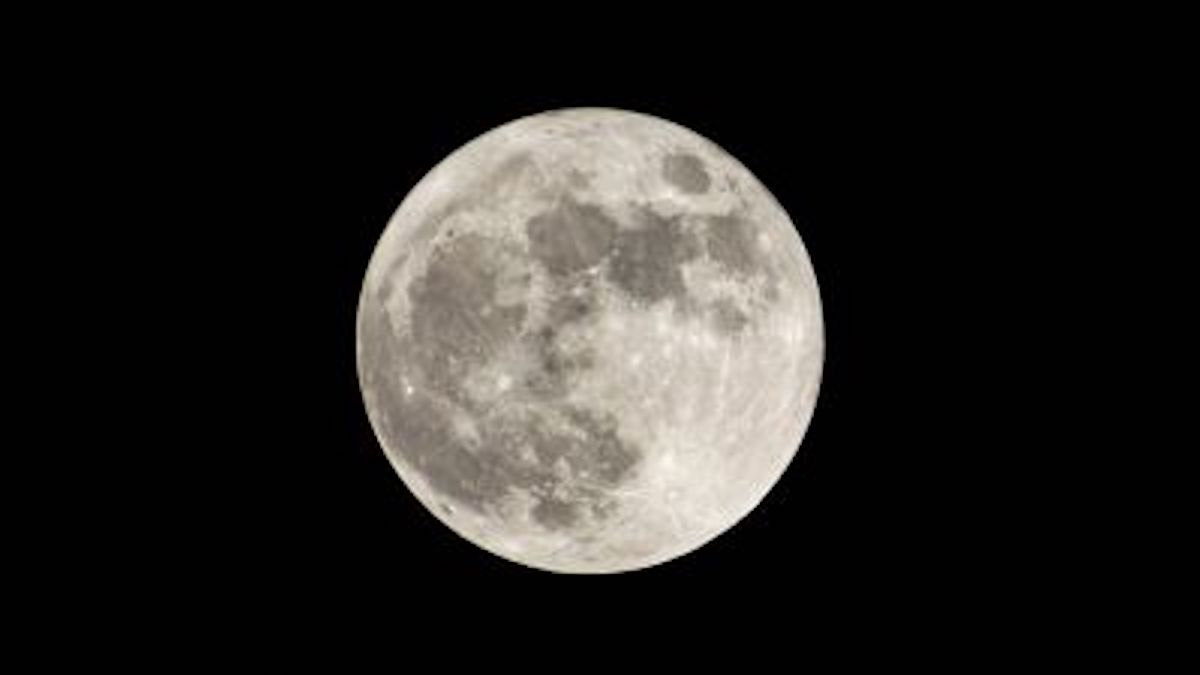Colossal asteroid impact forever changed the balance of the moon
An ancient collision is to blame for all the "holes" on the dark side of the moon.

One side of the moon is littered with far more craters than the other, and researchers finally know why: A massive asteroid that slammed into the moon around 4.3 billion years ago wreaked havoc in the moon's mantle, according to a new study.
More than 9,000 visible craters pockmark the moon, thanks to barrage of impacts from meteors, asteroids and comets over billions of years, according to the International Astronomical Union. However, these craters are not evenly distributed across the lunar surface. The far side of the moon, which people never see from Earth because the moon is tidally locked (meaning that it takes the same amount of time for the moon to rotate and orbit Earth), has a considerably higher concentration of craters than the visible nearside.
The nearside of the moon has fewer pits because the surface is covered in lunar maria — vast stretches of solid lava that we can see with the naked eye on Earth as dark patches on the moon. These lava fields likely covered up the craters that would otherwise have marked the moon's nearside. The far side of the moon has almost no lunar maria, which is why its craters are still visible.
Scientists have long suspected that lunar maria formed in the wake of a massive collision around 4.3 billion years ago. This collision created the South Pole–Aitken basin (SPA), a huge crater with a maximum width of around 1,600 miles (2,574 kilometers) and a maximum depth of 5.1 miles (8.2 km), which is the largest pit on the moon and the second largest confirmed impact crater in the solar system. However, until now researchers were unable to explain why only the nearside of the moon has lava fields.
Related: How many space rocks hit the moon every year?
The new study finds that the SPA impact created a unique phenomenon inside the moon's mantle, the layer of magma below the crust, that affected only the nearside.
"We know that big impacts like the one that formed SPA would create a lot of heat," lead author Matt Jones, a doctoral student of planetary science at Brown University, said in a statement. "The question is how that heat affects the moon's interior dynamics."
Get the Space.com Newsletter
Breaking space news, the latest updates on rocket launches, skywatching events and more!

Researchers already knew the nearside's lava fields originated within the moon's mantle, because lunar samples brought back by the Apollo missions contained radioactive, heat-generating elements such as potassium, phosphorus and thorium that are all suspected to be found in abundance within the lunar mantle, according to the statement.
In the new study, computer simulations revealed that the SPA impact would have created a heat plume within the mantle that pushed the radioactive elements toward the crust. The researchers repeated the simulation for a number of possible scenarios of the SPA impact, including direct hits and glancing blows, and found that regardless of how the asteroid hit, the mantle impacts would have only affected the nearside of the moon.
Put another way, when a space rock collided with the moon, it caused lava from the mantle to pour out on the nearside, burying many of its older impact craters.
"What we show is that under any plausible conditions at the time that SPA formed, it ends up concentrating these heat-producing elements on the nearside," Jones said. "We expect that this contributed to the mantle melting that produced the lava flows we see on the surface."
The researchers are pleased to have solved what they described as "one of the most significant questions in lunar science," according to the statement.
"The SPA impact is one of the most significant events in lunar history," Jones said. Being able to better understand how it shaped the two sides of the moon we see today is "really exciting," he added.
The study was published online April 8 in the journal Science Advances.
Join our Space Forums to keep talking space on the latest missions, night sky and more! And if you have a news tip, correction or comment, let us know at: community@space.com.

Harry is a U.K.-based staff writer at Live Science. He studied Marine Biology at the University of Exeter (Penryn campus) and after graduating started his own blog site "Marine Madness," which he continues to run with other ocean enthusiasts. He is also interested in evolution, climate change, robots, space exploration, environmental conservation and anything that's been fossilized. When not at work he can be found watching sci-fi films, playing old Pokemon games or running (probably slower than he'd like).










